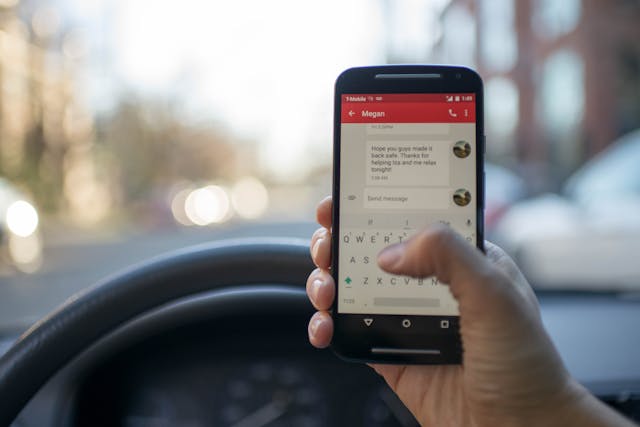Mobile marketing has become a cornerstone of digital strategy, with people increasingly relying on smartphones for everything from social media to shopping. With billions of mobile users worldwide, businesses that tap into mobile marketing can significantly boost their brand’s reach, engagement, and conversions. However, mobile marketing is not a one-size-fits-all approach—it includes various tactics and channels, each with unique benefits and strategies.
Here’s a deep dive into the most effective types of mobile marketing that can help expand your brand’s reach and influence in the mobile-first world.
1. SMS Marketing
SMS (Short Message Service) marketing remains one of the most direct and effective mobile marketing strategies. Text messages have impressively high open rates—often upwards of 98%—which means your brand’s message is almost guaranteed to be seen.
Why It Works:
SMS marketing allows businesses to send personalized messages, promotions, or alerts directly to a customer’s phone. Because of the immediacy and direct nature of SMS, it’s perfect for time-sensitive offers, event reminders, or product updates.
Use Cases:
Flash sales, appointment reminders, customer service updates, exclusive promotions.
Key Benefits:
High engagement and open rates.
Instant delivery with a high chance of being read within minutes.
Short and concise messaging ensures clear communication.
2. In-App Advertising
In-app advertising refers to displaying ads within mobile apps, targeting users while they are engaging with content. This method leverages the vast amount of time people spend using mobile apps, from gaming and streaming to shopping.

Why It Works:
In-app ads can be highly targeted based on user behavior and app usage. These ads are often more engaging than traditional display ads because they are contextually relevant to the app experience.
Use Cases:
Displaying ads in popular apps, promoting app downloads, and retargeting users based on their app activity.
Key Benefits:
Can target specific demographics or interests based on app usage.
Various ad formats such as banners, interstitial ads, and video ads offer flexibility.
High engagement, as users tend to be more engaged with apps than other digital platforms.
3. Mobile Search Ads
Mobile search ads are the mobile-optimized version of pay-per-click (PPC) advertising that appears on search engines like Google when users search on their smartphones.
Why It Works:
Mobile search ads take advantage of users’ intent. When someone searches for a product or service on their phone, they’re often looking for something specific and are ready to take action. These ads are designed to be highly relevant and contextually aligned with the user’s search query.
Use Cases:
Local businesses wanting to capture mobile users looking for nearby stores, eCommerce brands targeting product searches, or service providers attracting mobile leads.
Key Benefits:
Targets users with strong intent to purchase or find information.
Mobile-specific call-to-actions (CTAs), such as “Call Now” or “Get Directions,” are highly effective.
Optimized for small screens, making it easy for users to click and convert.
4. Mobile Social Media Marketing
Social media marketing on mobile platforms is a dominant force, given that the majority of social media usage occurs on mobile devices. Platforms like Instagram, Facebook, TikTok, and Twitter offer powerful mobile advertising options.
Why It Works:
Social media apps are designed with mobile users in mind, making them ideal platforms for mobile-first marketing campaigns. With precise targeting based on user behavior, interests, demographics, and location, brands can reach highly specific audiences on their mobile devices.
Use Cases:
Running mobile-optimized ads, influencer collaborations, product launches, user-generated content campaigns.
Key Benefits:
Mobile-first design leads to high engagement rates.
Social media platforms offer detailed targeting options.
Visual formats like Stories and Reels are perfect for engaging users on mobile devices.
5. Location-Based Marketing (Geo-Targeting)
Location-based marketing uses geolocation technology to deliver personalized marketing messages to users based on their real-time location. This tactic is especially useful for brick-and-mortar businesses looking to drive foot traffic.
Why It Works:
By targeting users in specific geographic areas, businesses can create hyper-relevant marketing campaigns that drive immediate action. For example, a restaurant could send a discount offer to users in close proximity during lunchtime.
Use Cases:
Local businesses attracting nearby customers, event marketing, personalized offers based on a user’s location.
Key Benefits:
Highly targeted, which increases the likelihood of conversions.
Effective for driving in-store visits.
Personalized messaging makes it relevant to the user’s immediate needs.
6. Mobile Push Notifications
Push notifications are messages sent directly to a user’s mobile device through an app they’ve installed. These notifications can be incredibly effective for driving engagement and prompting action.
Why It Works:
Push notifications are immediate, reaching users directly on their home screen. They are especially useful for apps trying to re-engage users, announce new features, or send reminders. Because the user has already installed the app, push notifications can be more personalized and less intrusive than other forms of marketing.
Use Cases:
Reminding users about items left in their cart, promoting app usage, updating users on new content or features.
Key Benefits:
Direct communication that doesn’t rely on users checking their email or social media.
Can be tailored to user behavior and preferences.
Real-time delivery increases chances of immediate action.
7. QR Code Marketing
QR (Quick Response) codes have seen a resurgence in recent years, especially during the pandemic, and are now a popular mobile marketing tool. By scanning a QR code with their smartphone, users can be directed to a website, landing page, or special offer.
Why It Works:
QR codes provide a seamless bridge between offline and online experiences. Whether displayed on print ads, packaging, or store windows, QR codes give users instant access to digital content with just a quick scan.
Use Cases:
Directing users to special offers, downloading apps, providing contactless menus, or enhancing in-store experiences.
Key Benefits:
Simple and quick way for users to access digital content.
Can be placed on physical marketing materials, linking offline efforts to online.
Can track engagement and user behavior based on scans.
8. Mobile Email Marketing
While email marketing has been around for years, optimizing it for mobile devices is essential. A significant portion of email opens happens on smartphones, making mobile-friendly emails crucial for success.
Why It Works:
Mobile email marketing focuses on creating responsive email designs that look great and are easy to interact with on small screens. This includes making sure that links, CTAs, and images load properly and are easy to click on a phone.
Use Cases:
Announcing new products, sending special promotions, nurturing leads, customer retention campaigns.
Key Benefits:
Email is a highly personalized form of communication.
Can drive traffic to mobile-optimized landing pages or eCommerce sites.
Allows for targeted segmentation, ensuring emails are relevant to the recipient.
9. Mobile App Marketing
Mobile app marketing refers to promoting an app to increase downloads, usage, and engagement. This can include both paid advertising (like App Store ads or social media campaigns) and organic efforts (like app store optimization, or ASO).

Why It Works:
Apps offer a dedicated platform for engaging users and can provide personalized experiences through push notifications, in-app messaging, and loyalty programs. Promoting an app helps establish a deeper connection with customers, as it allows for continuous interaction on their most personal device.
Use Cases:
App launch campaigns, promoting new app features, incentivizing downloads, or re-engaging inactive users.
Key Benefits:
Offers direct access to users who have already shown interest by downloading the app.
Personalized user experience within the app can enhance brand loyalty.
Multiple engagement opportunities, from push notifications to in-app promotions.
Conclusion: Selecting the Right Mobile Marketing Strategy for Your Brand
Mobile marketing offers numerous opportunities for brands to connect with consumers on the devices they use most. Whether through SMS, in-app ads, or push notifications, each strategy provides unique ways to engage with users and expand your brand’s reach. The key to success is selecting the tactics that best align with your audience and goals while ensuring a seamless, mobile-first experience.
By integrating one or more of these mobile marketing strategies, you can build a powerful marketing plan that not only captures attention but also encourages deeper engagement and conversion, helping your brand thrive in an increasingly mobile world.